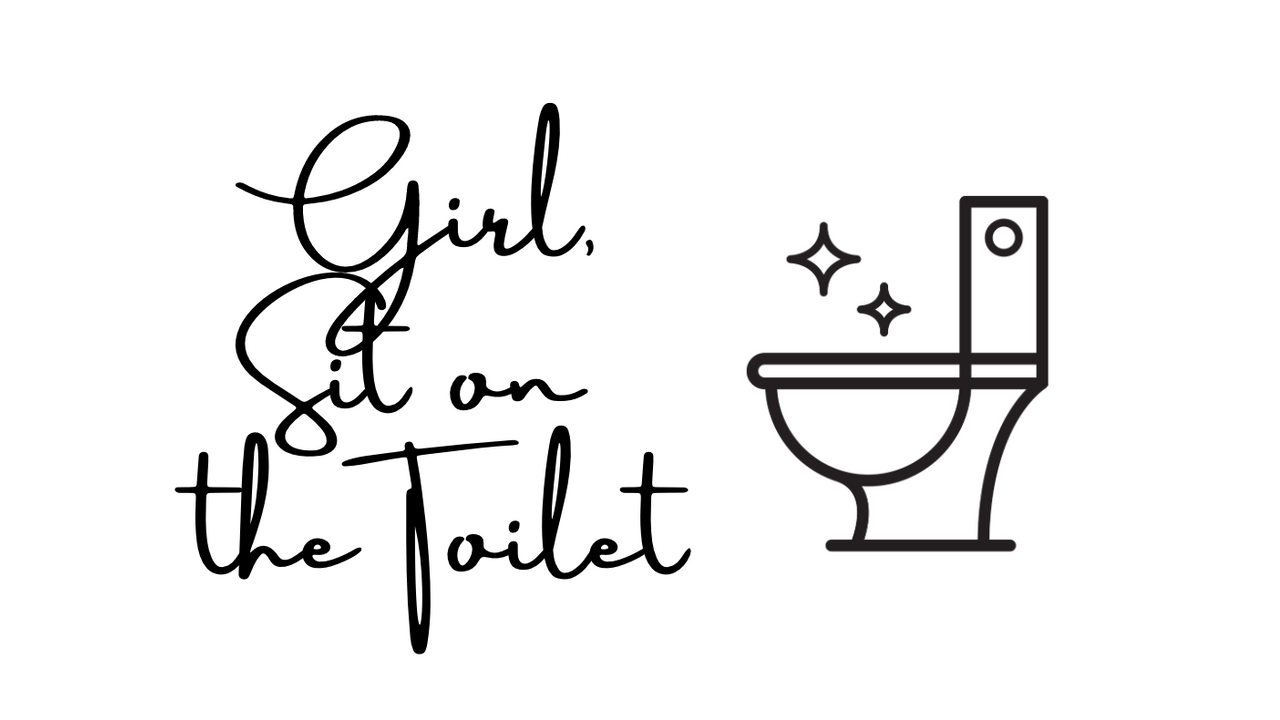Girl, Sit on the Toilet 🚽
Jan 31, 2021
Let’s talk about hovering over the toilet. You would be surprised how many people squat or “hover” over the toilet, especially in a public restroom, to avoid sitting fully on the toilet seat when peeing. Can I just say as a pelvic floor physical therapist, please stop that right now. It’s not good for your pelvic floor muscles and you’re actually making it way more challenging for yourself to urinate. I’ll explain…
When urinating, the muscles of your pelvic floor need to relax in order to fully empty your bladder. When you are squatting or hovering, you are contracting your pelvic floor muscles, making it more difficult for urine to flow easily. When you don’t fully empty your bladder, you could start experiencing more urinary frequency, urgency, or even increased bladder infections. It’s not worth it. Another problem we should talk about is pushing or straining to try and force the urine out more quickly. Please stop that too, as this is not good for your pelvic floor either, and could contribute to pelvic organ prolapse.
If you are freaked out about germs, you could use a toilet seat paper liner, but let’s get real, no one loves sitting on crunchy paper. My recommendation is to take your On Guard hand sanitizer and spray down the seat and wipe it dry before sitting on the toilet. Easy peasy.
So please, for the love of your pelvic floor, bladder, female organs, and all that is holy…Girl, sit on the toilet.
Now, I will share a few more toileting tips with you because we didn’t learn this in school, but we should have. Sit down completely on the toilet and relax when going to the bathroom (hopefully, we’ve made that point very clear). Next, lean forward a bit and rest your elbows on your knees. Relax and avoid distractions like being on your phone. Tune into your body. Take a few deep breaths. Don’t push or strain when going to the bathroom, but rather allow your pelvic floor muscles to sink down, feel heavy, and relax as well. Even when having a bowel movement (you know we had to add poop into this conversation) don’t push or strain. I highly recommend investing in a Squatty Potty, which helps your pelvic floor muscles relax and improves the angle of the puborectalis muscle, which basically means you are going to have a much better bathroom experience going number 1 or number 2. You can find one here: https://amzn.to/2jKOdtc.
Okay, back to urinating. When urinating, you should be able to pee for at least eight seconds (the example is counting 1 Mississippi, 2 Mississippi, etc). You should be able to get to 8 Mississippis. If not, you probably did not need to go in the first place, which leads me to my next point. Don’t go to the bathroom just for the sake of going. Tune in, listen to your body, and go when you need to go. On the flip side, don’t hold it when your body is telling you that you need to go. Listen and honor your body and get to the bathroom, because holding it for long periods of time is not good for your pelvic floor either. This is one of the reasons that teachers and nurses can have higher rates of urinary incontinence and leakage, because they cannot always get to the bathroom when they need to, and have to hold it.
Now, let’s wrap this post up with a few questions. Do you experience urinary leakage with coughing, sneezing, laughing, jumping, etc? This is not normal. I know, I know, your doctor, friends, mom, second cousin, etc, told you it was after childbirth, but this is something that can be easily addressed with the help of a pelvic floor PT. Find a specialist in your area by searching here https://pelvicrehab.com/ or here https://ptl.womenshealthapta.org.
Now go out there, sit on those toilet seats, and spread the word! You’ve got this! 🚽💪🏻💁🏻♀️
Essential oils are a huge tool that supported my healing after surgery. From post-op pain, to nausea, to scars, to even emotional support, the oils helped me a ton! This is my favorite starter kit with the top ten oils and a diffuser that includes everything you need while healing from surgery. Plus, once you get started, we will set up a one on one call with me so I can walk you through exactly how to use these tools to help you recover from surgery faster.
Stay connected with news and updates!
Join my mailing list to receive monthly health and wellness tips to support you along your healing journey.
Don't worry, your information will not be shared.
We hate SPAM. We will never sell your information, for any reason.

